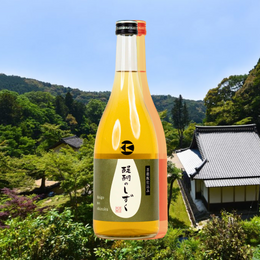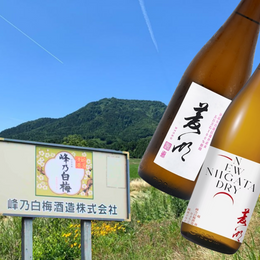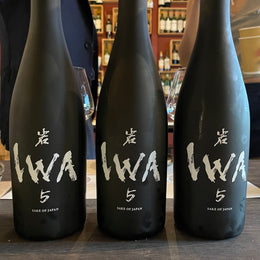
“He who controls the rice, controls the universe,” famously declared the big bad guy of Frank Herbert’s space opera tour de force, Dune. Wait, was it spice he mentioned?
While rice may not possess the psychedelic properties or interstellar travel-fueling capabilities of Dune's fictional spice, it undeniably holds a geopolitical power of its own in our world of 2025 CE. “The first sign of civil unrest can often be traced to rising rice prices,” said economist Dr. Mahabub Hossain. Rice may seem like a simple ingredient or an unassuming component of an inexpensive everyday meal to you. But across most of Asia, rice reigns supreme. No single food in the East or West comes close to matching rice’s dietary dominance.
Consider that rice provides up to 75% of daily energy needs for billions, and that many families in developing nations spend a staggering 50% to 70% of their total income to purchase rice, leaving them incredibly vulnerable to price hikes. On the other hand, low-income rice farmers themselves have a limited ability to weather sudden market shifts and declines in prices. This precarious balance explains why governments go to great lengths to maintain steady rice production and shield their agricultural sectors from global market instability, implementing policies like price controls, subsidies and import or export restrictions.
Navigating this complex landscape requires in-depth research and analysis of rice as a commodity. This is where organisations like the International Commodity Institute (ICT) and trade publications like The Rice Trader (TRT) come in. These organisations work closely with traders, rice producers and policymakers, equipping them with the insights needed to make sensible decisions.


An interesting initiative developed by ICT and TRT is the “World's Best Rice” contest, an annual event that invites countries to submit the most aromatic grains developed by them for evaluation. A panel of experts would judge the rice on various criteria, including texture, aroma and flavour. While the audience for these gatherings is highly specialised – primarily rice producers, traders, academic researchers and NGOs – the impact of these events is quite far-reaching. For smaller producer nations such as Cambodia, which recently won the 2024 contest, such contests are an essential opportunity to differentiate themselves from major producers such as India and Thailand, gain visibility in global trade and attract international buyers. Extra points are also granted if a particular cultivar is resistant to challenging climate, motivating countries and farmers to make further innovations in rice cultivation.
Amongst the many submissions in these contests, there is the remarkable ST25 from Sóc Trăng Province of Vietnam which has won the World’s Best Rice award in 2019 and again in 2023. ST25 is the result of years of dedicated research and hybridisation, combining traditional Vietnamese rice strains to enhance its resilience and quality. Not only does ST25 boast a more fragrant aroma – a subtle pandan-like note and a distinct sweet flavour – it is also noted for its low glycemic index, making it a healthier choice compared to many other varieties.

This leads us to the sake we’re review that recently was launched by Vietnam’s pioneering Mùa Craft Sake. Founded in 2022 by a group of passionate entrepreneurs, Mùa Craft Sake has quickly become prominent in Vietnam's burgeoning craft drinks scene for its commitment to use locally cultivated Vietnamese long-grained indica rice. The challenge of brewing sake with such rice is unique – unlike round-shaped japonica rice traditionally used in sake brewing, long-grain rice has a structure that makes it difficult to polish. To overcome this, Mùa Sake developed a method to brew with entirely unpolished long-grain rice, allowing them to craft sakes with an earthy richness and lively acidity rarely found in traditional Japanese sake.

The recently launched Mùa Pure Rice Sake is made entirely with the famed ST25, intended to showcase the authentic characteristics of this celebrated rice. We had a chance to taste this at The Sake Company’s booth at Sake Matsuri Singapore.
Mùa Pure Rice Sake, Vietnam ST25 Rice, 15% ABV – Review

Tasting Notes
Colour: Clear.
Aroma: Soft, almost fluffy and powdery gentle scents of desiccated coconut. This expands out to coconut water and coconut powder. It’s soft and snowy, yet incredibly fragrant. More on steamed Jasmine rice sweetness, with a light pepperiness and also a zestiness of lemon peels. The coconut notes remain lifted and so aromatic!
Taste: Soft and supple richness, incredibly flavourful with this medium bodied and clean, deep sweetness of rice and rice mash, along with touches of yogurt. It’s lightly savoury too with the addition of some barley porridge.
Finish: It deepens here, taking a richer turn. More of that coconut milk, garnished by soft powdery desiccated coconut. That deep soft sweetness of Jasmine rice mash and rice porridge makes a return into the finish. A clean yet subtle note of cooked barley takes the finish, malty almost.

My Thoughts
I have to admit that initially I didn’t get what the fuss was about - it pretty much felt like a classic sake, but once I started paying attention and caught it! Bam! It’s been weeks and I’m still thinking about it!
It’s rather subtle yet it’s incredibly distinctive this soft, powdery and fragrant coconut flavour that carries with it such a beautiful aroma along with a deep and supple yet rich rice mash sweetness almost akin to a nigori.
And as mentioned, once you’ve found the key, the rest comes naturally and you come away thinking what a beautiful and elegant, yet unique sake this is.
Readers based in Singapore can grab a bottle of this sake at The Sake Company!

@CharsiuCharlie







